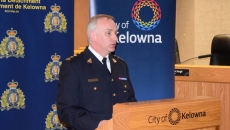Canada's struggle against the COVID-19 pandemic passed a bleak milestone on Thursday, with data from one of the hardest-hit provinces pushing the national caseload over the 100,000 threshold.
The national tally, reached after Ontario reported 173 news cases, secured Canada's place among the 20 countries hardest-hit by the novel coronavirus since its global spread began just six months ago.
Medical experts say the Canadian figures highlight both successes and failures in Canada's response to the pandemic, noting provincial and territorial health systems remained able to cope with the crisis despite governments' early reluctance to impose widespread closures and lack of preparation for a robust testing regime.
"It could have been much more than that had we not implemented the measures we did when we did," said Dr. Susy Hota, medical director of infection prevention and control at Toronto's University Health Network. "We did not overwhelm the system in that initial wave that hit the country."
Hota said the medical community was awake to the possibility of a serious medical crisis ahead of the population at large, who for weeks were told that a new form of coronavirus originating in the Chinese city of Wuhan posed a minimal to low risk to Canadians.
Early literature on the disease eventually dubbed COVID-19 sounded tentative alarm bells for doctors before the federal government launched an information blitz aimed at curbing its spread on Jan. 24, she said.
Government assurances that the disease had not reached Canadian shores had to be abandoned the next day when a Toronto man returning from a visit to Wuhan was identified as the country's first COVID-19 patient. Three days later, another case was diagnosed in British Columbia.
The small number of cases that cropped up in those provinces over the month of February were all linked to recent travel to either China or Iran and not believed to pose an imminent health risk. Patients were urged to self-isolate at home, and public health officials began ramping up calls for proper hand hygiene.
But matters started to change in late February and early March when cases of COVID-19 began appearing in other provinces, starting with the one that would become the epicentre of Canada's outbreak.
Quebec has recorded the highest number of cases and fatalities since its first case was announced on Feb. 27. The province's spring break, which falls on the first week of March, has been widely cited as a root cause of the severe outbreak in that province.
Premier Francois Legault has said the mass exodus of residents travelling abroad came "at the worst possible time," noting their uninhibited movements likely allowed the virus to proliferate.
Had spring break struck one week later, it would have hit at precisely the time the rest of Canada began to get seriously alarmed about COVID-19.
The World Health Organization's March 11 decision to classify the virus as a global pandemic touched off a wave of closures and emergency public health measures around the world, and it wasn't long before Canadian officials got on board.
On March 14, the federal government urged Canadians abroad to hasten home, and the country's top public health officer shifted the government's message about the virus the next day amid rising cases of COVID-19 in at least five provinces.
"Our window to flatten the curve of the epidemic is narrow,” Dr. Theresa Tam said at a March 15 news conference. "We all need to act now. COVID-19 is a serious public health threat."
One week later, most schools, offices and non-essential businesses across Canada had shut their doors, ushering in an era of self-isolation that lasted for months. That isolation even took on a geopolitical dimension on March 21 when Canada and the United States mutually agreed to close their shared border to non-essential travel.
In most provinces, the lockdowns were supported by dire projections about the thousands of people who could die without aggressive public health measures to limit the spread of the virus.
While the numbers never reached the levels mapped out in provincial models, case numbers still mounted rapidly across most of the country. The totals were especially staggering in long-term care homes and other group-living facilities.
Stephen Hoption Cann, an epidemiologist with the University of British Columbia's School of Population and Public Health, said the devastating toll the virus has exacted on seniors has emerged as the most glaring shortcoming of Canada's pandemic containment strategy.
"I don't think there was enough emphasis on these long-term care institutions as there should have been," he said, citing delayed action on rolling out widespread testing and preventing employees from working in multiple facilities. "Once it gets in there, it spreads quite rapidly."
Outbreaks at homes in Quebec and Ontario, deemed so severe that they could not be controlled without help from the Canadian Armed Forces, exposed a litany of horrific conditions including patient neglect and chronic understaffing. The issues raised have prompted pledges of reform from provincial and federal officials alike.
Long-term care outbreaks were not confined to central Canada. One at a seniors' home in Halifax in April eventually accounted for 53 of Nova Scotia's 62 deaths.
Nor were congregate living facilities the only hotbeds of infection in Canada. A cluster of at least 143 known cases, for instance, was linked to a single funeral home in Newfoundland in March.
But while Canada's provinces and territories largely travelled the same path to pandemic-related lockdown, the road to recovery has looked markedly different from one jurisdiction to the next.
While Ontario continues to log more than 170 new cases a day as of Thursday, officials in B.C. declared the regional curve was flattening on April 17. And every province has mapped out its own approach on everything from returning to class to restaurant reopenings to inter-provincial travel.
Public health experts all agree the virus has not yet run its course in Canada, urging caution as reopening efforts ramp up across the country.
Hoption Cann said robust testing — a feature missing from the early days of Canada's response — will be essential to help the country ride out what he describes as an inevitable second wave that could hit as early as the fall.
And Hota, who said governments struggled to balance emerging scientific advice with public health protection in the early days of Canada's outbreak, believes they may have to act more decisively if numbers trend upward again.
She cautioned against comparing Canada's caseload to those in other countries operating with different health systems and societal norms.
"The absolute numbers are important, but to me it's less important than the overall impact to our people," she said. "Have we been able to protect the masses of people we're responsible for protecting? I think we've done a reasonably good job."






